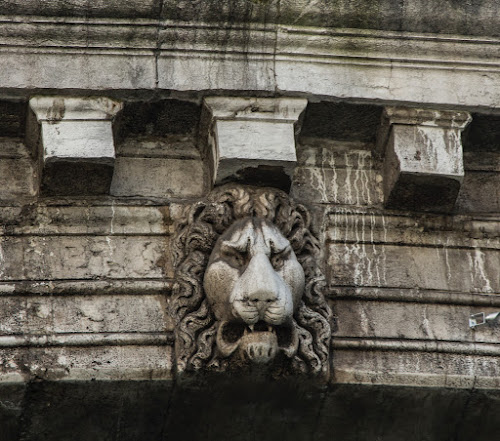It was early evening now. The day-tourist crowds were thinning out and many of the workers were leaving the island to their homes in Mestre. Not that the city became dead quiet, it just means, especially for these two intrepid bridge-walkers, that one didn't have to fight against a throng of people along the main routes in the city. The bridges became a little more quiet, and the gondoliers were noticeably fewer.
We now crossed the bridge that most defined Venice as a city of bridges: Ponte di Rialto, the most photographed, most recognised, and most visible icon of the city. We walked across it three or four times, stopping at the top, briefly browsing the souvenir shops along its staircase and peeking around the bottom corners at the reliefs decorating the sides.
All that could be possibly written about the Ponte di Rialto has already been put to paper. Every self-respecting tour guide knows that the first version of the bridge was built in 1255; that a wooden version of it collapsed twice (in 1444 and 1524) under the weight of crowds watching regattas on the Grand Canal, and that the present stone bridge dates from 1591. Today, despite it being in dire need of a facelift, it remains an impressive icon with the biggest wow-factor in Venice.
I scanned the bridge with a photographer's eye, looking for new angles and new interpretations of the Ponte di Rialto. Perhaps a black and white view, or perhaps something with a wide angle? I took a few photographs, and promised myself to return in the following days. Because right now, we had fourteen bridges to complete, and light was fading fast.



No comments:
Post a Comment